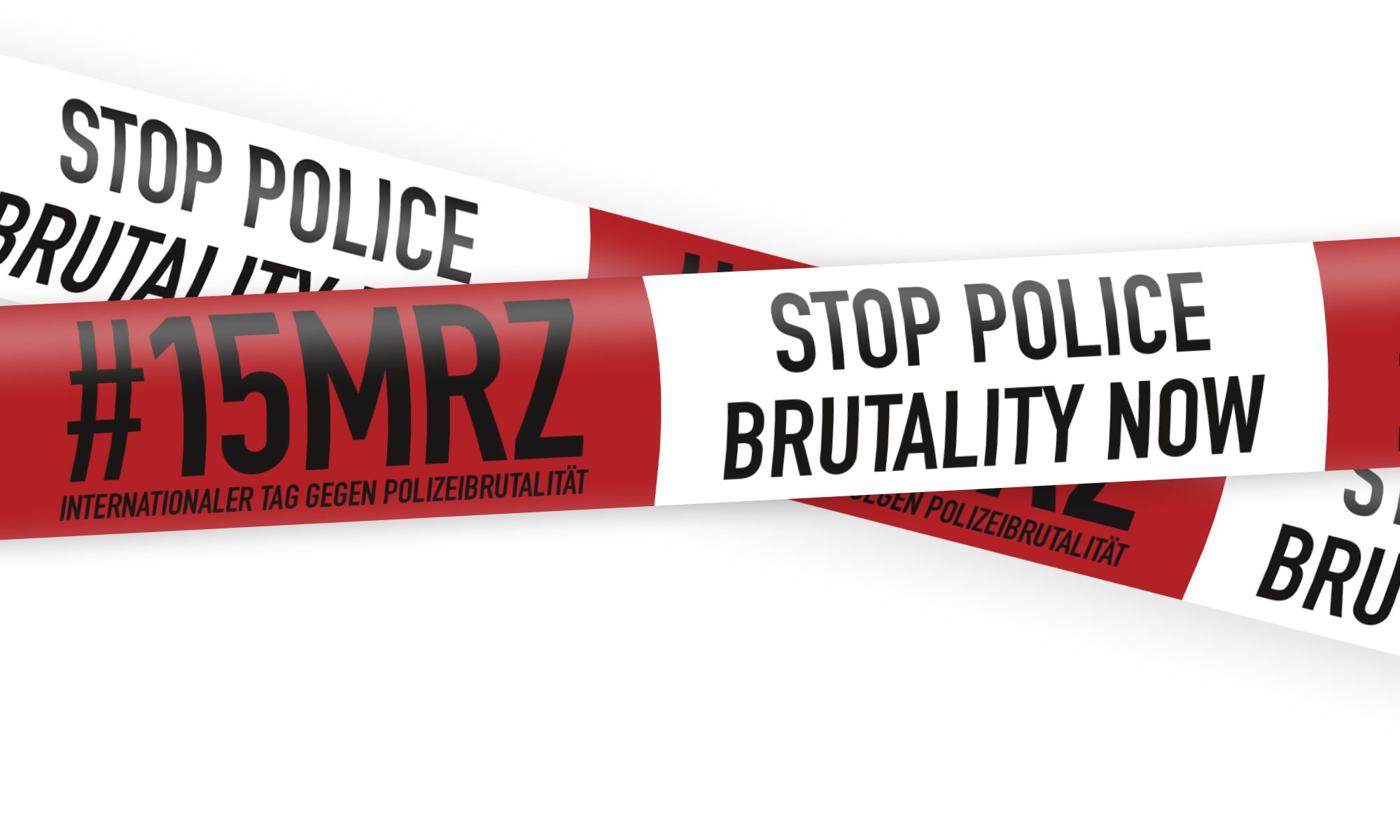We call on you, come to the rally on Monday, March 15, 2021 at 4 pm at Jorge Gomondai Square!
The year 2020 was marked by the death of George Floyd and the discussion about police violence. However, this sad event was neither an isolated incident nor a new development. Police violence has existed as long as police have existed. Police stops and violence do not happen by chance. Mostly people who are affected are poor, people of color, black people, homeless people, young people, people who do not fit into gender norms, people with mental problems, political activists.
Police violence is structural – What does that mean?
1. The police represent the state’s monopoly of violence in society, they are legally allowed to use violence. The police is equipped with more and more rights, weapons and surveillance technology. The police have prejudices just like many other people and therefore act in a discriminatory way towards certain groups of people. The police enforces the discriminatory policies of the state, such as pushing people out of public places. There are right-wing structures and networks within the police and investigative agencies. There is a strong esprit de corps within the police. There is a tendency towards authoritarian behavior, which means the police put themselves above other people.
2. Police do not receive consequences for their misconduct. In 2019, the accusation of (negligent) bodily harm in office was raised 308 times against police officers in Saxony. Of these 308 accusations, just four (1.3%) were prosecuted by the public prosecutor’s office. The remaining cases were dropped. Of the four cases brought to trial, there was one conviction (fine). The probability of actually being convicted of an offense of (negligent) bodily harm in office as a police officer is therefore 1:307 or 0.3%.[1] Apart from this, according to a study by the Ruhr University in Bochum, only one in six assaults by the police are actually reported by those affected.[2] There is therefore a legal vacuum.
Since 1997, groups internationally have been calling for actions to mark the Day Against Police Brutality.
The international day against police brutality was founded in 1997 on the initiative of the C.O.B.P. (Montréal/Canada) and the anarchist group “Black Flag” (Switzerland). The date commemorates the March 15, 1996, brutal attack by Swiss police on two children, ages 11 and 12. Since then, every year on March 15, people around the world take to the streets to commemorate the dead and oppose police violence.
There are more and more initiatives that take action against police violence. Important tactics here are: Documenting and publicizing violence. Strengthening people’s rights towards the police. Supporting those affected by police violence. Develop alternative social concepts in which we can solve social and interpersonal conflicts without the police. Defund the Police – put financial resources into social projects instead of militarizing the police.
A strong community is safer than armed police in our neighborhoods.
Be in solidarity, intervene in police stops and violence!
[1] https://www.kgp-sachsen.org/2020/12/18/korperverletzung-im-amt-durch-sachsische-beamtinnen/
[2] https://kviapol.rub.de/index.php/inhalte/zwischenbericht
